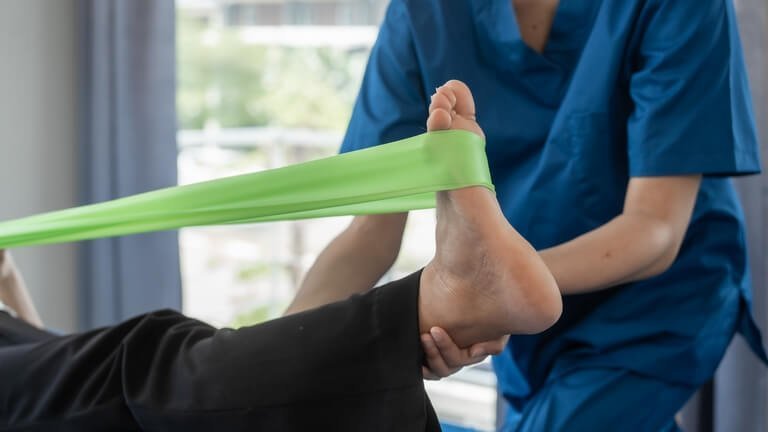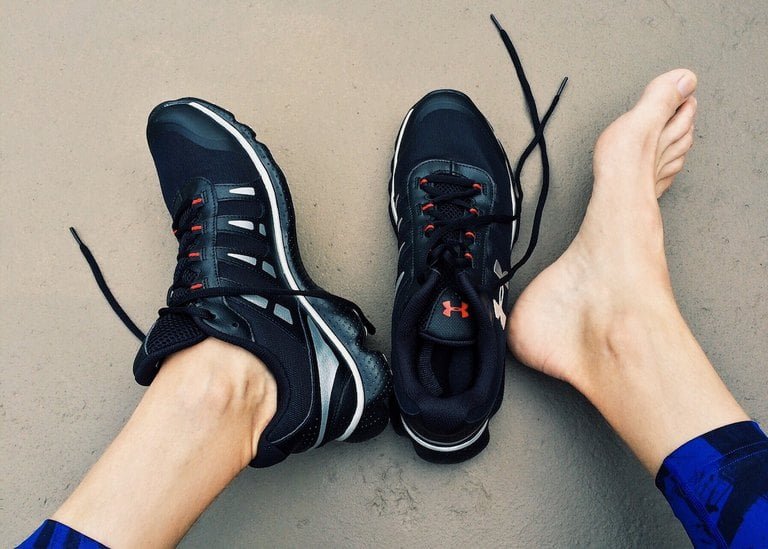What to wear to physical therapy
Table Of Contents

What NOT to wear to physical therapy
First, here's a list of things to put away when you go to see a therapist.
- Dresses and skirts. They may not cover your lower body, especially if you need therapy for a hip, leg, or knee injury. They may also interfere with your exercises or modalities.
- Sandals, flip-flops, heels. These may not provide enough support for your feet and ankles, which are important for balance and stability.
- Excessive jewelry. This can interfere with your therapy or cause discomfort, especially if you have a neck, shoulder, arm, or wrist injury. It may also interfere with some modalities, such as electrical stimulation or ultrasound.
- Work clothes, business suits. These can get dirty or sweaty during your exercises or modalities. They may also restrict your movement or limit your therapist's visibility.
- Jeans and heavy fabrics. These may be too tight or difficult to roll up, restricting your movement or your therapist's access to the area.
- Lotion, perfume. These can irritate your skin, cause allergic reactions, interfere with massage movements, and interfere with some modalities such as heat or cold therapy.

Rules for choosing clothing for physical therapy
If you are wondering what to wear to physical therapy, here are some rules and principles to help you choose the right clothes.
- Clean and fresh. Make sure your clothes are clean and free of dirt, sweat, or odors. This will help you feel more comfortable and confident during your therapy session.
- Comfortable. Clothes for physical therapy should be comfortable and breathable, such as cotton or moisture-wicking fabrics. Avoid clothing that is too tight or heavy.
- Freedom of movement. Wear therapy clothes that allows you to move freely and easily during therapy: lifting arms and legs, squatting, walking.
- Layers. Dress in layers so that you can adjust your clothing according to your body temperature and the therapy environment. This will help you avoid overheating or getting too cold.
- Access to the injury. Wear to physical therapy clothes that allow that allows your therapist easy and safe access to the affected area. Avoid clothing that covers or hides the affected area.

Clothing for upper body therapy (back, neck, shoulders, arms)
t is important to dress appropriately for your physical therapy appointments to ensure accessibility and mobility in these specific areas.
If you are scheduling physical therapy for back, wear a T-shirt that allows your therapist to easily access the correct areas of your body. If you have long hair, it would be helpful to bring a hair tie to keep your hair out of these areas during the session.
If you have a shoulder injury, the physical therapist may ask you to remove your shirt or t-shirt so that he or she can examine your upper back, shoulders, and arms. Wear a sports bra if you normally wear a bra. However, if you are uncomfortable removing your shirt, your therapist may be able to perform the examination while you wear a T-shirt that exposes your shoulders.
If you are rehabilitating an injury to your wrist, arm, or hand, it is a good idea to wear a loose-fitting shirt that allows your arms to be exposed. Tight-fitting shirts, especially those made from materials such as Lycra, should be avoided as they may hinder your therapist’s ability to effectively assess and treat the affected area.
If you are having physical therapy for lower back, it is recommended that you wear a T-shirt, a sports bra if necessary, and shorts or pants with an elastic waistband. Your therapist may need to lower your pants slightly to visualize your lower spine or pelvis during the examination.

Clothing for lower body therapy (legs, hips, knees, feet, ankles)
When it comes to your lower body, including your hips, legs, and knees, it is critical that your therapy clothing allows for unrestricted movement and exercise while still allowing your therapist to visually assess and physically examine your back, hips, knees, and legs as needed.
When choosing what to wear to physical therapy for hip, it is important to understand that the therapist must be able to observe and manipulate your spine and hip joint. Choosing shorts is preferable. It may be necessary to choose a pair with an elastic waistband. It is advisable to avoid tight-fitting pants that restrict your range of motion.
For knee physical therapy, wear loose-fitting shorts or workout pants with an elastic waistband that can be easily rolled up or down. If you’re wondering if you can wear leggings to physical therapy, the answer is no. Leggings, long pants, or jeans may be fashionable, but they may not roll up easily, making it difficult for your therapist to evaluate and treat your knees effectively.
If you have a foot or ankle injury, it is recommended that you wear socks and shoes to your physical therapy appointments. Your therapist may observe your walking pattern in both shoes and barefoot. Wearing socks helps maintain hygiene during your therapy sessions.
Shoes for physical therapy

If in doubt, ask your therapist
Choosing the right physical therapy outfit can make a big difference in your comfort, confidence, and recovery. However, if you are not sure what to wear or what to avoid, you can always ask your physical therapist for advice. They will be happy to guide you and answer any questions you may have. Remember, your therapist is your partner in healing and wants you to have the best experience.
Proudly Serving Colorado
improve the quality of life of our patients.

